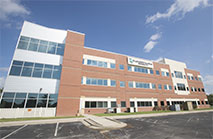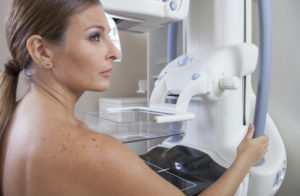Clinical Breast Exam- What, Why and Who?
 As radiologists specializing in women’s health, we cannot state often enough the importance of mammograms. But just as we speak of breast health being a piece of whole-body health, mammograms are just a piece of whole-breast evaluation.
As radiologists specializing in women’s health, we cannot state often enough the importance of mammograms. But just as we speak of breast health being a piece of whole-body health, mammograms are just a piece of whole-breast evaluation.
There is no one silver bullet to the prediction, prevention or detection of breast cancer. It can be rather sneaky sometimes. While the mammogram is a powerful tool in detection, it is not perfect. However, some issues are palpable – that is, they can be felt. This makes self-exams and clinical breast exams extremely important. While we’ve spoken about the importance of monthly self-exams, we’d like to get in depth on clinical exams.
What is a clinical breast exam?
A clinical breast exam (CBE) is the part of a routine physical exam focused on your breasts. Your healthcare practitioner has been specially trained to examine the breast visually and by feeling to detect any changes that might be worrisome for cancer. This will involve feeling the breasts for lumps or areas of thickening, comparing one side with the other. Your underarm (axillary area) will also be examined. Your breasts will be visually inspected laying down and then often sitting up, looking for any changes.
This is a great time to ask questions if you’re concerned that you’re “not doing it right” when it comes to your own monthly breast self-exam or if there is a “lumpy-bumpy” area you are not sure about.
What’s the fine print?
Beginning around ages 19 or 20, for young women of average risk, CBE will likely be the only screening exam done. It should be done annually (or at least every three years).
For women age 40, and older mammography AND clinical breast exams should occur every year. If you are at higher than average risk, staggering your mammogram and clinical breast exam 6 months apart means you will undergo some type of breast screening twice each year – a good idea.
So why do you need a CBE too? Mammography and breast ultrasound are not perfect. Not all breast cancers are shown by our imaging tests. It can detect lumps or changes that need further evaluation. The clinical breast exam is a key supplement for those women with dense breasts and those with breast implants, populations that can pose problems for mammography.
Remember, many of the changes found on the CBE, just like in your breast self-exam, can turn out to be normal tissue or benign, noncancerous things, so don’t fret!
By teaming up with your healthcare providers, you can help ensure the most complete picture of your body and enjoy your best possible health!
Image credit: Breast Exam by Photogroup (Photographer) via NCI Visuals Online, Copyright Public Domain.
Originally published 8/13/13 on mammographykc.com.





